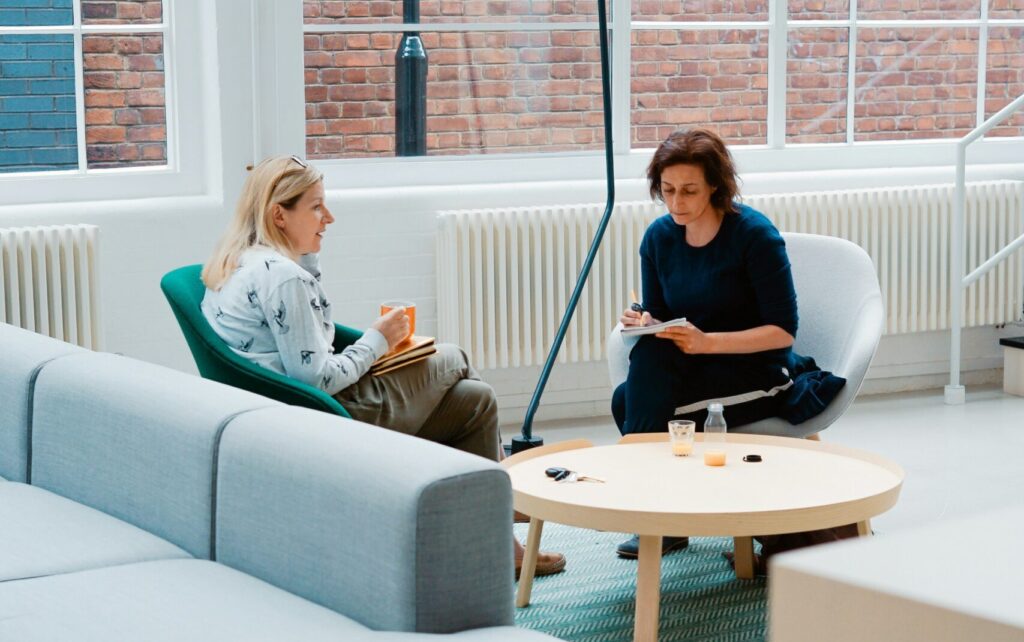It is no secret that the use of technology has become synonymous with modern life. Today, more than 4.1 billion people—52% of the world’s population—use the internet (Kujawski, 2018). This has translated into 3.5 billion Google searches (Internet Live Stats, 2019a), 350 million photos uploaded to Facebook (Smith, 2019), and 500 million tweets every single day (Internet Live Stats, 2019b). In fact, the average Canadian now spends over 24.5 hours online a week, with figures climbing even higher among younger demographics (Thomson, 2017).
These rapid changes—many of which happened within the last two decades—have had a profound impact on daily life. Here are just some of the ways it is affecting wellness, and what it means for future professionals.
1. Technology Could Be Contributing to “Always on” Culture
The rapid rise of smartphones has had a dramatic impact on many aspects of life, including workplace communications and work culture. Rather than reduce workloads and improve work/life balance, which many initially predicted, professionals have instead seen technology have the opposite effect. In fact, there is now “an implicit expectation that you should be able to reach someone when it is convenient for you, regardless of whether it is convenient for them.” (Levitin, 2015) This has lead to what many experts refer to as “always on” culture, where employees are expected to be reachable at any time, even during evenings, weekends, and vacations (Levitin, 2015).

Always on culture can prevent the mind from completely relaxing
Experts caution that this has eroded work/life balance, preventing the mind and body from relaxing and recovering (Wall, 2014). This creates an alarming cycle, in which tired employees make more mistakes and are less productive, causing more stress (Wall, 2014). Once you become a counsellor, you can help break this cycle by creating and maintaining workplace wellness programs.
2. The Rise of Multitasking Has Graduates of Wellness College Worried
The stimulation offered by smartphones, social media, and other online activities can promote multitasking. Unfortunately, this negatively affects wellness, given that “the kind of rapid, continual shifting we do with multitasking causes the brain to burn through fuel so quickly that we feel exhausted and disoriented after even a short time.” (Levitin, 2015) Experts caution that “This leads to compromises in both cognitive and physical performance,” as well as higher levels of “the stress hormone cortisol in the brain, which in turn can lead to aggressive and impulsive behaviour.” (Levitin, 2015) In fact, according to one study, “on days when adolescents used their devices more…they were more likely to experience conduct problems such as lying, fighting and other behavioral problems.” (Duke University, 2019)
The need for rapid decision making also often occurs in conjunction with multitasking (Levitin, 2015). Recent research has discovered that making even small decisions can be very demanding on the brain, and that “little decisions appear to take up as much energy as big ones.” (Levitin, 2015) This can further drain energy, and make later decisions harder to negotiate. (Levitin, 2015)
3. Experts Are Concerned About Technology’s Impact on Physical Wellness
Long hours spent sitting at a desk, either at home or at work, negatively affects physical health. Indeed, “The list of ills associated with hours of uninterrupted sitting includes elevated risk of heart disease, diabetes, cancer and other conditions.” (Hutchinson, 2014) In fact, recent reports indicate that in Canada “only 35 per cent of children from the ages of 5 to 17, and 62 per cent of kids from the ages of 3 to 4, are getting the recommended physical activity levels for their age groups.” (CTV News, 2018). Tellingly, researchers found that “Both groups are also getting more screen time than is recommended.” (CTV News, 2018). Adults fare far worse, with reports finding that “only 17 per cent of adults met the Canadian Physical Activity Guidelines of getting at least 150 minutes of ‘moderate-to-vigorous physical activity’ per week.” (Abedi, 2018)
In the workplace, those who wish to stretch or incorporate more physical activity into their day can face several barriers that hinder their progress, such as teasing or embarrassment (Hutchinson, 2014). According to one study, “the biggest barrier to adherence was feeling awkward about doing the movement breaks around other employees not participating in the program.” (Hutchinson, 2014) Fortunately, professionals with a diploma in wellness counselling are well equipped to make a difference in this regard. One study found that with “individual and organizational-level guidance,” employees were able to reduce the amount of time they spent sitting by as much as 89 minutes (Hutchinson, 2014).
Are you interested in becoming a wellness counsellor?
Discover how Rhodes Wellness College can help you prepare for this rewarding career.
Works Cited
Abedi, M. (2018) Canadians aren’t nearly as active as they think they are: survey. Global News. Retrieved from: https://globalnews.ca/news/4777241/canadians-physical-activity-survey/
CTV News (2018) Canadian children earn ‘D+’ in physical activity rankings: report. CTV News. Retrieved from: https://www.ctvnews.ca/health/canadian-children-earn-d-in-physical-activity-rankings-report-1.3979240
Duke University (2019) More Technology Use Linked to Mental Health Issues in At-Risk Adolescents. Duke Today. Retrieved from: https://today.duke.edu/2017/05/more-technology-use-linked-mental-health-issues-risk-adolescents
Hutchinson, A. (2014) Sitting is the new smoking, and it’s time to quit. The Globe and Mail. Retrieved from: https://www.theglobeandmail.com/life/health-and-fitness/fitness/would-you-do-this-at-work/article17945720/
Internet Live Stats (2019a) Google Search Statistics. Retrieved from: http://www.internetlivestats.com/google-search-statistics/ Internet Live Stats (2019b) Twitter Usage Statistics. Retrieved from: http://www.internetlivestats.com/twitter-statistics/
Kujawski, M. (2018) Global internet statistics for 2018. Medium. Retrieved from: https://medium.com/@mikekujawski/global-internet-statistics-for-2018-c9dda951717e
Levitin, D. (2015) Why the modern world is bad for your brain. The Guardian. Retrieved from: https://www.theguardian.com/science/2015/jan/18/modern-world-bad-for-brain-daniel-j-levitin-organized-mind-information-overload
Smith, K. (2019) 53 Incredible Facebook Statistics and Facts. Brandwatch. Retrieved from: https://www.businessinsider.com/facebook-350-million-photos-each-day-2013-9
Thomson, A. (2017) Canadians spend more time online at expense of face-to-face time. CTV News. Retrieved from: https://www.ctvnews.ca/sci-tech/canadians-spend-more-time-online-at-expense-of-face-to-face-time-1.3333902
Wall, M. (2014) Smartphone stress: Are you a victim of ‘always on’ culture? BBC News. Retrieved from: https://www.bbc.com/news/business-28686235










